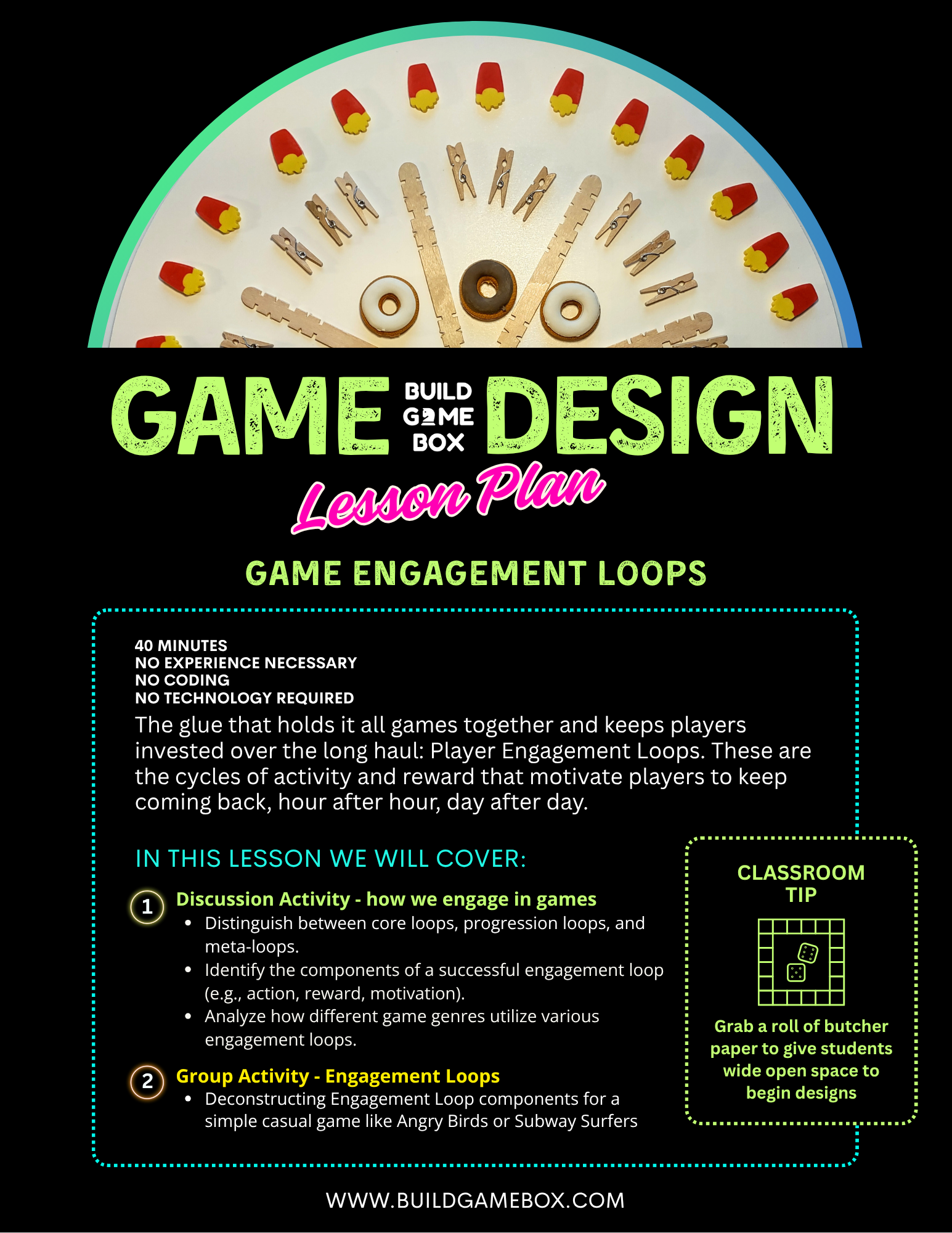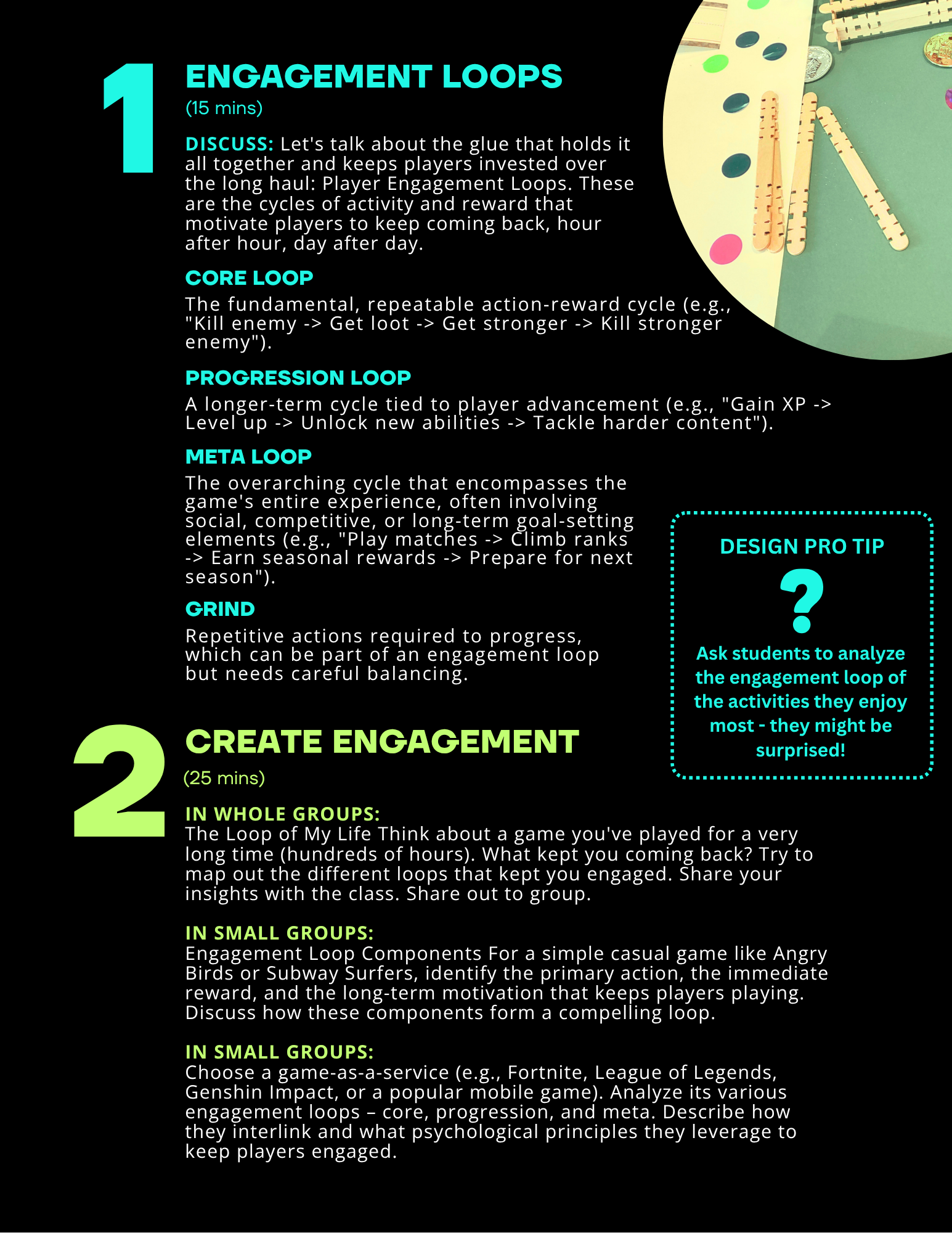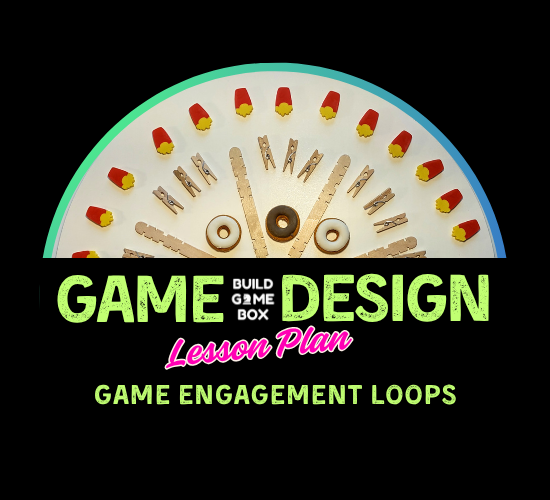

Lesson 6: Player Engagement Loops
Let's talk about the glue that holds it all together and keeps players invested over the long haul: Player Engagement Loops. These are the cycles of activity and reward that motivate players to keep coming back, hour after hour, day after day.
Learning Objectives
By the end of this lesson, you should be able to:
- Define "Player Engagement Loops" and their significance in long-term game design.
- Distinguish between core loops, progression loops, and meta-loops.
- Identify the components of a successful engagement loop (e.g., action, reward, motivation).
- Analyze how different game genres utilize various engagement loops.
- Begin to design simple engagement loops for a game concept.
Key Concepts
Core Loop (Revisit): The fundamental, repeatable action-reward cycle (e.g., "Kill enemy -> Get loot -> Get stronger -> Kill stronger enemy").
Progression Loop: A longer-term cycle tied to player advancement (e.g., "Gain XP -> Level up -> Unlock new abilities -> Tackle harder content").
Meta-Loop: The overarching cycle that encompasses the game's entire experience, often involving social, competitive, or long-term goal-setting elements (e.g., "Play matches -> Climb ranks -> Earn seasonal rewards -> Prepare for next season").
Motivation: The intrinsic and extrinsic factors that drive players to engage (e.g., mastery, achievement, social connection, novelty, reward).
Variable Reinforcement: Delivering rewards unpredictably to maintain engagement (think slot machines).
Flow State: The immersive experience where a player is fully absorbed and challenged at an optimal level.
Grind: Repetitive actions required to progress, which can be part of an engagement loop but needs careful balancing.
Activities
Discussion Starter: The Loop of My Life Think about a game you've played for a very long time (hundreds of hours). What kept you coming back? Try to map out the different loops that kept you engaged. Share your insights with the class.
Class Activity: Deconstructing Engagement Loops Let's break down the core loop, progression loop, and meta-loop of a popular RPG like Diablo or World of Warcraft. How do these different loops interlock to keep players invested over time?
Group Activity: Engagement Loop Components For a simple casual game like Angry Birds or Subway Surfers, identify the primary action, the immediate reward, and the long-term motivation that keeps players playing. Discuss how these components form a compelling loop.
Design Challenge: Gardening Game Engagement Loops You're designing a new casual mobile game about gardening. In your groups, propose what would be its core loop, and what kind of progression loop and meta-loop you could implement to keep players engaged over weeks or months.
Homework
Loop Analysis: Choose a game-as-a-service (e.g., Fortnite, League of Legends, Genshin Impact, or a popular mobile game). Analyze its various engagement loops – core, progression, and meta. Describe how they interlink and what psychological principles they leverage to keep players engaged.
Further Reading: Read "Hooked: How to Build Habit-Forming Products" by Nir Eyal (focus on the Hook Model). While not exclusively about games, its principles are highly relevant.
Further Watching: Search for GDC talks on "retention," "player psychology," or "game loops."
Conclusion
Engagement loops are the long game of game design. They're about creating compelling cycles of activity and reward that tap into fundamental human motivations. By understanding and intentionally designing these loops, you can transform a fun short experience into a beloved long-term obsession. Keep these principles in mind as you move forward with your own designs!
